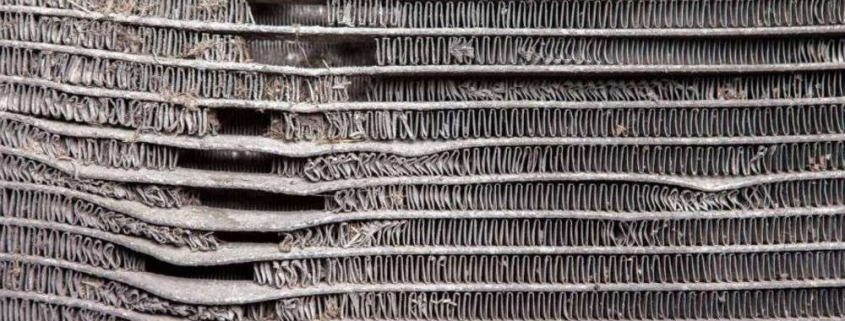What is radiator corrosion?
How to stop a radiator from corroding
Have you noticed some odd behaviour from your radiator recently? Things like overheating, inefficient cooling or coolant leakage?
There could be a few factors at play here, but a likely cause is radiator corrosion, which is an all too common failure in the cooling system. Corrosion can break down a radiator over time and is generally pretty visible, but there are certain types of corrosion that are harder to predict. Once corrosion damage has set in, there’s no going back so it’s important to keep an eye out to avoid costly fixes.
The good news is that even though corrosion is not fully preventable, when you are armed with the right knowledge you have a good chance of keeping it at bay. So, to find out more on how to protect your radiator, read the following ‘all you need to know’ guide.
Natrad’s experienced network of cooling specialist technicians can diagnose problems with your radiator and cooling system. If something’s not quite right, Nip into Natrad where the friendly team can perform a cooling system check.
How do you know if it’s corrosion?
We’ll start with the basics. Generally, corrosion can be defined as “The chemical reaction between materials, usually metal and its environment, which results in deterioration of the metal and its properties.” — Body Corp Resources.
Physically, this means your radiator can become perforated with holes, cracks, or brittleness — making it vulnerable. For the sake of this article, we’ll focus on the most common types of corrosion and how they affect radiators and the broader cooling system.
The impact of corrosion
Deterioration of the metal obviously results in some adverse effects, most of which will impact performance and functionality. While different kinds of corrosion may happen in various ways, you will still end up with substantial damage. Problems may include:
- Reduced corrosion protection (if the damage is not already severe)
- Reduced performance and cooling efficiency
- Weak and brittle tubes
- Loss of coolant/leakage
- Build up of sludge or debris (clogging)
- Pitting, cracking, or general deterioration of metal
- Mixing of coolant and transmission fluid
- Overheating
- Radiator failure
If you’re experiencing any of these symptoms, talk to Natrad today to discuss the best possible solution for your car. Whether you need a replacement part or repairs, our team can help.
What are the different types of corrosion in radiators?
Chemical corrosion is the most common type, triggered by the chemical reaction between metal and corrosive fluid. Some general visible signs are:
- Rust on the radiator tubes
- Lower tank covered in white residue
- Brittle header plates
The other type is mechanical corrosion, which is known as the physical scraping and wearing of an exposed surface leading to rust, but we won’t cover that in detail here.
Pitting corrosion
In aluminium radiators (and oil coolers), pitting corrosion is the most common form that occurs. Generally, as an extremely localised attack in the metal, it results in small, hardly visible holes. These small holes or ‘pits’ can vary in depth and occur in various groups or numbers. If formed in a group, they may appear like a rough-textured surface.
Their size and placement makes them tricky to identify — and this makes them prone to causing sudden, unpredictable failure. To prevent this kind of corrosion it’s important to flush the cooling system properly before fitting a new radiator to avoid mixing of coolants, contamination or residual build-up.
Stress-corrosion cracking
Stress corrosion is caused by the simultaneous presence of tensile stress and a corrosive medium. The result is fine cracks found throughout the material which may grow over time. This can lead to severe damage and failure of the radiator. This kind of corrosion is most common in brass alloys, where cracks often surface at the bottom of the gutter or in the header plates. This happens because the stressed material is more vulnerable to a ‘chemical attack’.
The best way to prevent this is to avoid ammonia based compounds when cleaning, or other harmful chemicals that may interact with the metal.
Key prevention tips
As with any car part, proper care and servicing will help keep most things functioning well. To help prevent corrosion as much as possible, here are a few extra tips to assist:
- Use corrosion inhibitor coolant and demineralised water only
- Use the manufacturer’s recommended coolant
- Ensure the system is adequately flushed during coolant change or replacing of parts
- Don’t mix coolants — top up your coolant with the same pre-mix currently in the car
- Be on the lookout for any oddities such as overheating or leaking
- Keep up a good servicing schedule
Now that you know
Now that you’ve got some knowledge under your belt, what’s the next step? If you’ve identified corrosion as the problem or things are simply just not right with your cooling system, getting it checked by a professional can help.
Natrad is the largest national network of cooling system specialists, which means there are teams all across Australia who can address your needs. Whether you need a cooling system test or flush, a new radiator or re-core, the experienced technicians at Natrad are there to help.








